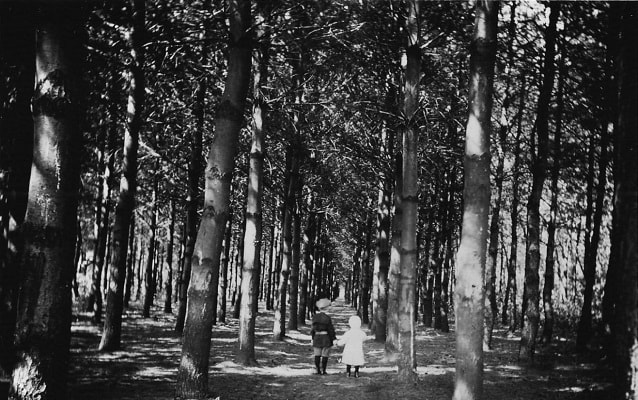Last updated: December 13, 2017
Place
Schulwald

Photo courtesy of the Amana Heritage Society
The Amana Society used local timber in building and in crafts, and sold it to neighboring settlers. The colonists understood the timber economy and cut elm, hickory, hackbury, and oak for lumber.
However, once Barbara Heinemann Landmann, a Werkzeug (a prophet who received messages from God), warned against "pleasures of the eye," the Amana Society leadership forbade the planting of shade and ornamental trees. Heinemann admonished her fellow Inspirationists to "see to it that all trees not bearing fruit be removed from the house, for they belong to the pleasures of the eye." In response, apple, cherry, plum, and peach trees were commonly found surrounding kitchen houses and in orchards at the village fringe. Despite Landmann's admonition to grow only fruit trees in the villages, the Inspirationists planted pine groves throughout the Amana Colonies. Groves of Austrian pines were planted around cemeteries’ perimeters to shield and protect these areas.
Throughout the Amana Colony landscape, Tannenwälder (pine groves) and schulwälder (pine groves planted and tended to by schoolchildren) dot the landscape. Amana Colony school children planted the first of these groves near Price Creek in the 1860s. The pines stood until the 1940s, when the Federal Government requested they be cut to contribute to the war effort. This act also meant to demonstrate the Amana Society’s dedication to the U.S., as many were suspicious of their German roots and ties.
